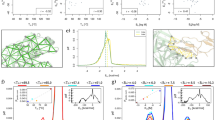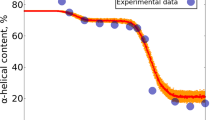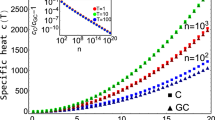Abstract
I RE-EXAMINE here the recently published empirical equations of Chothia1 for the accessible surface area of 12 monomeric proteins, and demonstrate that accessible surface area of monomeric proteins varies as the 2/3 power of the molecular weight. The total packing volumes of proteins are obtained from the sum of the individual residues, and the approximation of proteins as spheres is used to predict the loss of accessible surface on association of two proteins. The treatment is extended to calculate the proportion of the monomer surface buried in the formation of higher oligomers.
This is a preview of subscription content, access via your institution
Access options
Subscribe to this journal
Receive 51 print issues and online access
$199.00 per year
only $3.90 per issue
Buy this article
- Purchase on Springer Link
- Instant access to full article PDF
Prices may be subject to local taxes which are calculated during checkout
Similar content being viewed by others
References
Chothia, C., Nature, 254, 304–308 (1975).
McMeekin, T. L., Groves, M. L., and Hipp, N. J., J. Am. chem. Soc., 71, 3298–3300 (1949).
Richards, F. M., J. molec. Biol., 82, 1–14, (1974).
Chothia, C., and Janin, J., Nature, 256, 705–708 (1975).
Author information
Authors and Affiliations
Rights and permissions
About this article
Cite this article
TELLER, D. Accessible area, packing volumes and interaction surfaces of globular proteins. Nature 260, 729–731 (1976). https://doi.org/10.1038/260729a0
Received:
Accepted:
Issue Date:
DOI: https://doi.org/10.1038/260729a0
This article is cited by
-
SEDNTERP: a calculation and database utility to aid interpretation of analytical ultracentrifugation and light scattering data
European Biophysics Journal (2023)
-
Comparative studies of structural properties and conformational changes of proteins by analytical ultracentrifugation and other techniques
Colloid & Polymer Science (1996)
Comments
By submitting a comment you agree to abide by our Terms and Community Guidelines. If you find something abusive or that does not comply with our terms or guidelines please flag it as inappropriate.



